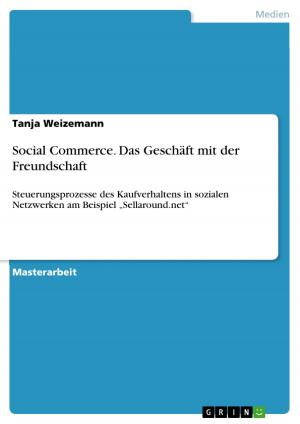| Author: | Thomas Egner | ISBN: | 9783640442935 |
| Publisher: | GRIN Verlag | Publication: | October 12, 2009 |
| Imprint: | GRIN Verlag | Language: | English |
| Author: | Thomas Egner |
| ISBN: | 9783640442935 |
| Publisher: | GRIN Verlag |
| Publication: | October 12, 2009 |
| Imprint: | GRIN Verlag |
| Language: | English |
Research Paper (undergraduate) from the year 2009 in the subject Business economics - Personnel and Organisation, grade: 1,3, University of applied sciences, Munich, course: Human Resource Management, language: English, abstract: Changing market environments, improved expectations of shareholders and investors and increasing competition often require the implementation of new strategies or the reorganization of the business, in order to stay competitive and to fulfill the diverse needs of the stakeholders. The alignment of organizations and strategies goes hand in hand with a high degree of complexity and therefore numerous factors have to be analyzed and evaluated to ensure the targeted outcome. Many enterprises focused on the analysis of only hard factors, such as the evaluation and controlling of financial key data and disregarded soft facts, like employee needs, when reorganizing the organizations structure. R. Pascale and G. Athos developed a framework that is known as the McKinsey Seven S Model, which ensures the consideration of hard and soft company factors, when a re-organization takes place, in order to unify and to align the strength of the single factors. The model states an overview on seven company factors that make up the elements of success for a firm. Next to the consideration of hard and soft components, the relationships and the conflicts among the success factors are taken into account as well. The McKinsey Seven S Framework outlines the importance of an all embracing view, when restructuring firms by the means of the implementation of a new strategy or organization form. Target is it to align all company factors to the same direction and to mitigate conflicts between the factors to ensure a maximum output of the process.
Research Paper (undergraduate) from the year 2009 in the subject Business economics - Personnel and Organisation, grade: 1,3, University of applied sciences, Munich, course: Human Resource Management, language: English, abstract: Changing market environments, improved expectations of shareholders and investors and increasing competition often require the implementation of new strategies or the reorganization of the business, in order to stay competitive and to fulfill the diverse needs of the stakeholders. The alignment of organizations and strategies goes hand in hand with a high degree of complexity and therefore numerous factors have to be analyzed and evaluated to ensure the targeted outcome. Many enterprises focused on the analysis of only hard factors, such as the evaluation and controlling of financial key data and disregarded soft facts, like employee needs, when reorganizing the organizations structure. R. Pascale and G. Athos developed a framework that is known as the McKinsey Seven S Model, which ensures the consideration of hard and soft company factors, when a re-organization takes place, in order to unify and to align the strength of the single factors. The model states an overview on seven company factors that make up the elements of success for a firm. Next to the consideration of hard and soft components, the relationships and the conflicts among the success factors are taken into account as well. The McKinsey Seven S Framework outlines the importance of an all embracing view, when restructuring firms by the means of the implementation of a new strategy or organization form. Target is it to align all company factors to the same direction and to mitigate conflicts between the factors to ensure a maximum output of the process.















